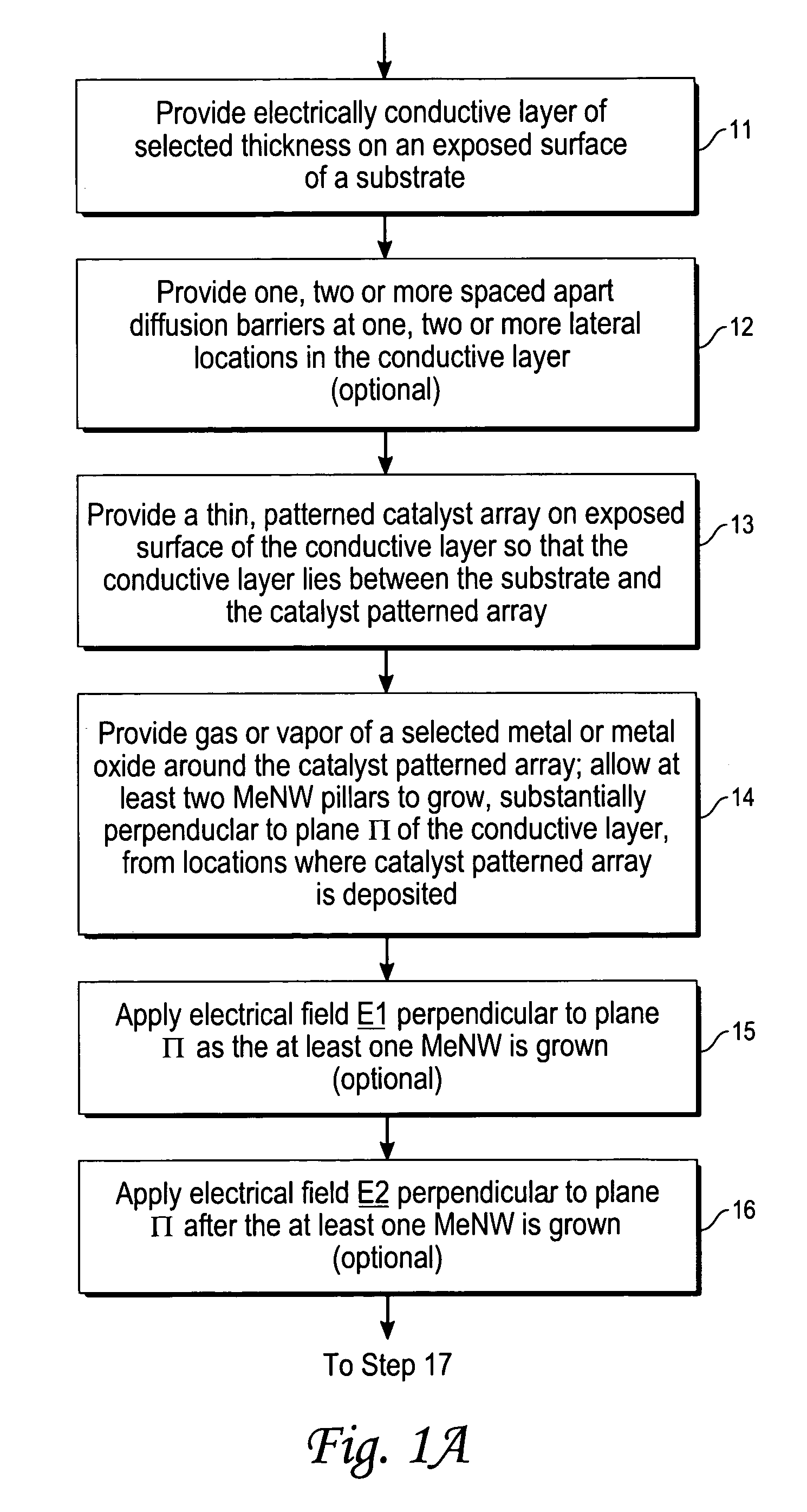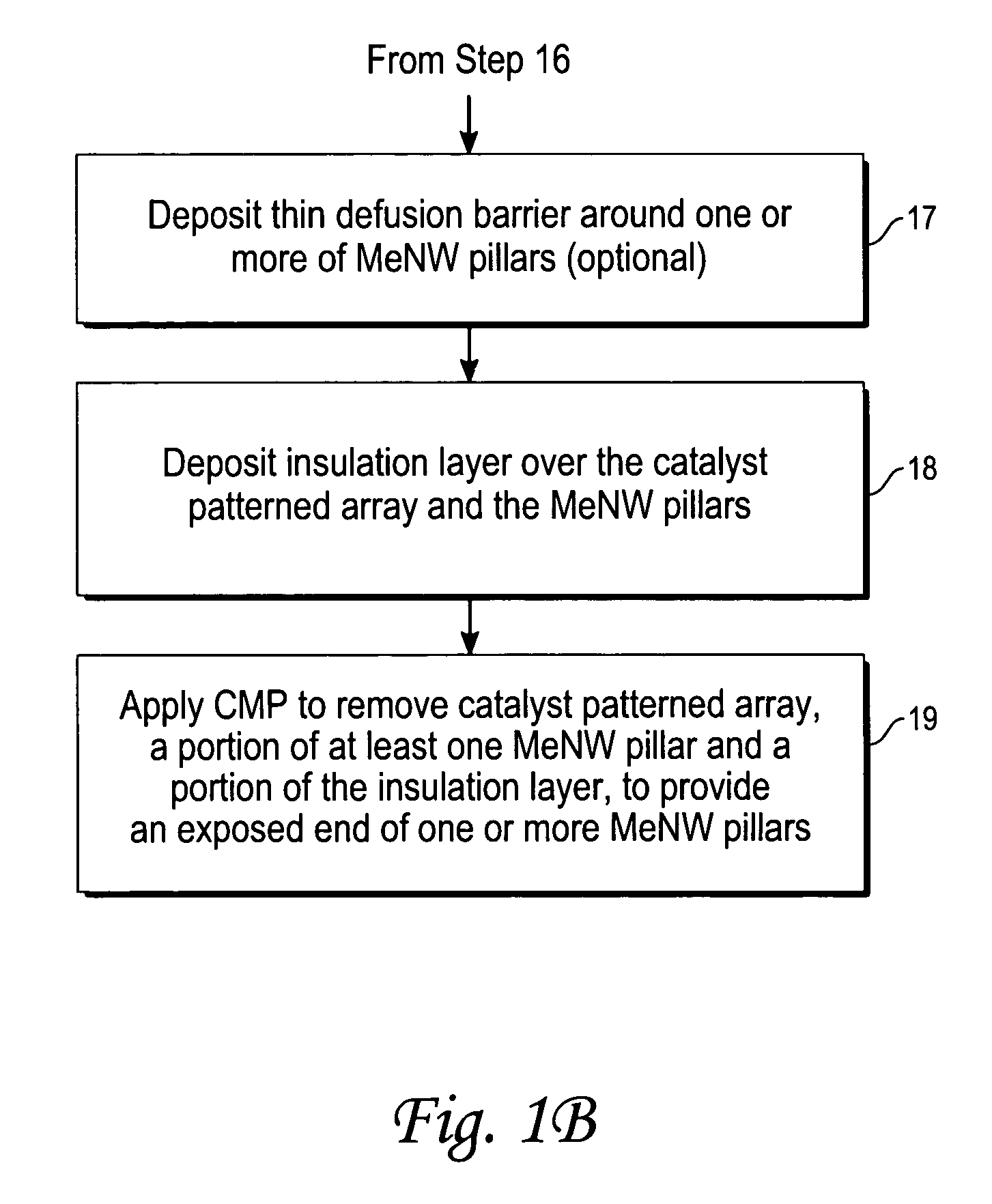Metallic nanowire interconnections for integrated circuit fabrication
a technology of integrated circuit fabrication and nanowires, which is applied in the direction of electrical equipment, semiconductor devices, semiconductor/solid-state device details, etc., can solve the problems of high resistance to electrical migration material and processing difficulties, and increased resistance of common interconnect metals to electro-migration
- Summary
- Abstract
- Description
- Claims
- Application Information
AI Technical Summary
Benefits of technology
Problems solved by technology
Method used
Image
Examples
Embodiment Construction
[0016]FIG. 1A / 1B is a flow chart of a procedure for practicing the invention. In step 11 (illustrated in FIG. 2A), an electrically conductive layer 22, preferably having a thickness in the range 0.2–250 nm, is provided on an exposed surface of a substrate 21, which may have any reasonable thickness. The substrate material may be silicon or a silicon on insulator, and the conductive layer material may be Cu, Ag, Au, Pd, Pt, Ni, Fe, Co, Ir, Ti, Zr, and / or a metal-doped silicide. Optionally, two or more spaced apart diffusion barriers 23 of a selected barrier material (e.g., TiuNv or TauNv of thickness 1–10 nm, where u and v are positive numbers) is provided at one, two or more laterally displaced locations in the conductive layer 22, to limit transverse movement of the conductive layer material, in step 12.
[0017]In step 13 (illustrated in FIG. 2B), a thin, patterned array 24 of MeNW catalyst elements, preferably having thicknesses of 0.1–20 nm, is provided on an exposed surface of the...
PUM
| Property | Measurement | Unit |
|---|---|---|
| thickness | aaaaa | aaaaa |
| thickness | aaaaa | aaaaa |
| diameter | aaaaa | aaaaa |
Abstract
Description
Claims
Application Information
 Login to View More
Login to View More - R&D
- Intellectual Property
- Life Sciences
- Materials
- Tech Scout
- Unparalleled Data Quality
- Higher Quality Content
- 60% Fewer Hallucinations
Browse by: Latest US Patents, China's latest patents, Technical Efficacy Thesaurus, Application Domain, Technology Topic, Popular Technical Reports.
© 2025 PatSnap. All rights reserved.Legal|Privacy policy|Modern Slavery Act Transparency Statement|Sitemap|About US| Contact US: help@patsnap.com



